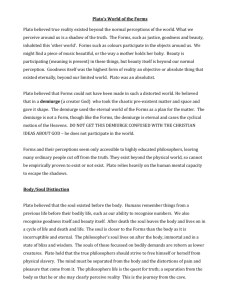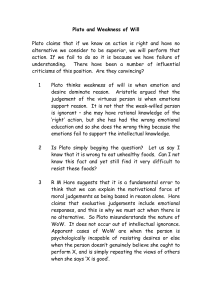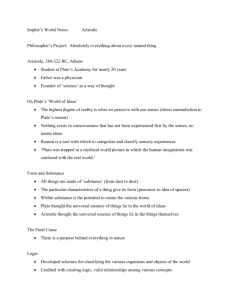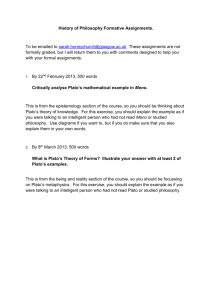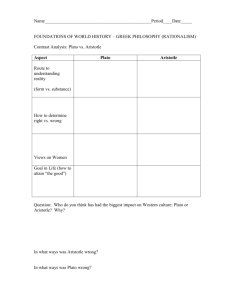The Archetypal Model: Eternal Exemplar, Mind, Wisdom, and Son of
advertisement
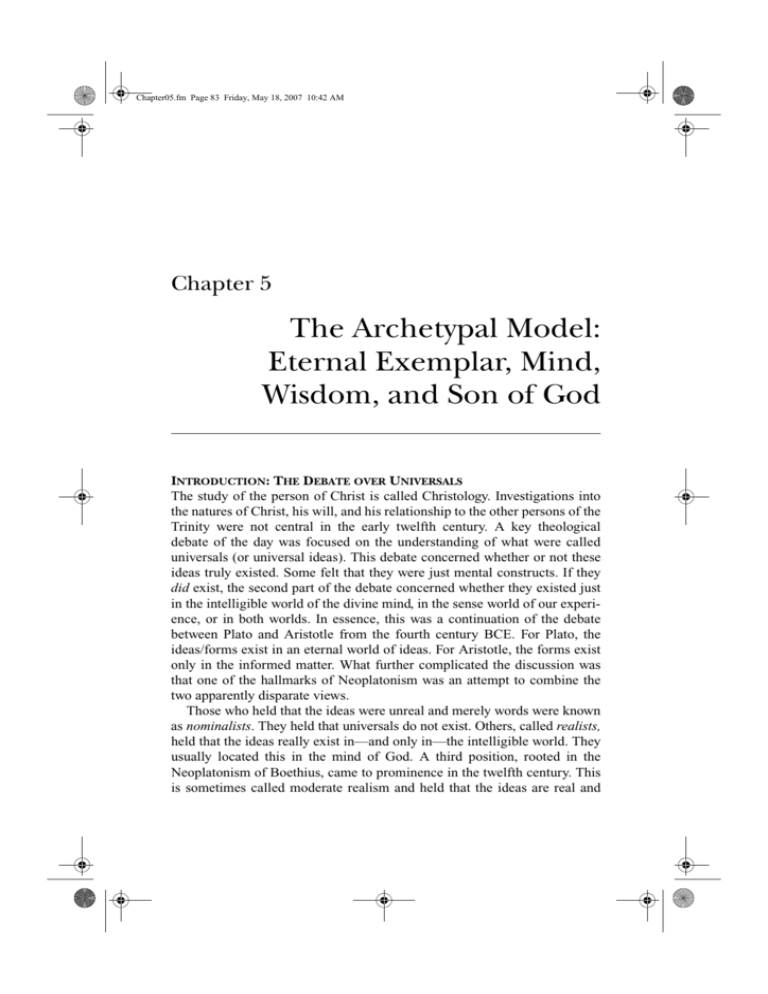
Chapter05.fm Page 83 Friday, May 18, 2007 10:42 AM Chapter 5 The Archetypal Model: Eternal Exemplar, Mind, Wisdom, and Son of God INTRODUCTION: THE DEBATE OVER UNIVERSALS The study of the person of Christ is called Christology. Investigations into the natures of Christ, his will, and his relationship to the other persons of the Trinity were not central in the early twelfth century. A key theological debate of the day was focused on the understanding of what were called universals (or universal ideas). This debate concerned whether or not these ideas truly existed. Some felt that they were just mental constructs. If they did exist, the second part of the debate concerned whether they existed just in the intelligible world of the divine mind, in the sense world of our experience, or in both worlds. In essence, this was a continuation of the debate between Plato and Aristotle from the fourth century BCE. For Plato, the ideas/forms exist in an eternal world of ideas. For Aristotle, the forms exist only in the informed matter. What further complicated the discussion was that one of the hallmarks of Neoplatonism was an attempt to combine the two apparently disparate views. Those who held that the ideas were unreal and merely words were known as nominalists. They held that universals do not exist. Others, called realists, held that the ideas really exist in—and only in—the intelligible world. They usually located this in the mind of God. A third position, rooted in the Neoplatonism of Boethius, came to prominence in the twelfth century. This is sometimes called moderate realism and held that the ideas are real and Chapter05.fm Page 84 Friday, May 18, 2007 10:42 AM 84 THE SACRED COSMOS exist intelligibly, but also exist, somehow, in the things of the sense world.1 This portrait is perhaps too neat, as indeed there were more accusations of positions than actual stated positions. The Chartrians chose an expression that was a variation of the third choice. Their system was rooted in exemplarism—the belief that the divine ideas exist in the world of perfection (the world of ideas), and these in turn exist in the things of this world as an image of the original. In this chapter we examine the Chartrian understanding and incorporation of Neoplatonic exemplarism. We begin with an overview of Plato’s description of the archetypal model and then proceed to examine what became of this in the writings of the Neoplatonists who influenced William and Thierry. We shall weave the historical context of the early twelfth century into our narrative. THE DIVINE ARCHETYPE IN PLATO AND THE NEOPLATONISTS In the last chapter, we recounted a description of the Demiurge in Plato’s Timaeus. In the story, the Demiurge exists with another eternal principle in the intelligible world. This second eternal principle is called the model, the archetype, the form, and the idea.2 Aside from the multiple names/metaphors that we are offered for this concept, Plato is not very clear on the makeup of this model, or its relationship to the Demiurge. As he does elsewhere, i.e., in the Crito and the Phaedo, Plato assumes that the reader knows about his theory of forms from his other works. The Chartrians, however, did not know these works, but relied on the information distilled from the Neoplatonic writings. Plato is equally unclear about the relationship between the archetypal idea that is the model of the cosmos, and that which it contains—the individual ideas of all that exists in the cosmos. The model seems to exist as a single reality, containing an infinite array of ideas. This represented, to some Neoplatonists, a plurality of ideas within the idea. Calcidius cites this as a central reason for placing the mind of God on a second level and not equal to the One or the Father. For others, the plurality only existed when things were created in the sense world; in the divine mind there remained a singularity. A great deal depended on how one decided to rank this divine archetype.3 In Plato’s account, the model appears to exist independently of the Demiurge and, because the Demiurge must use it to guide his ordering, it can appear that the Demiurge is dependent on the model. When trying to connect this concept to the second person of the Christian Trinity, this dependency and the possibility of multiplicity existing in the Godhead are two problems with which Christian Neoplatonists had to contend.4
